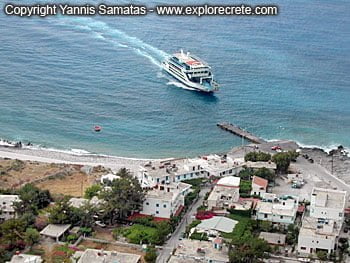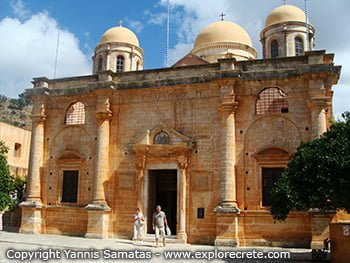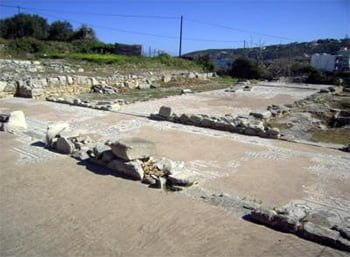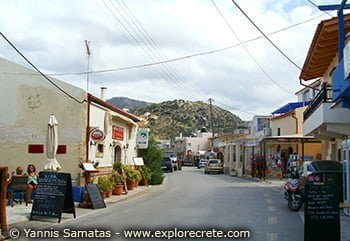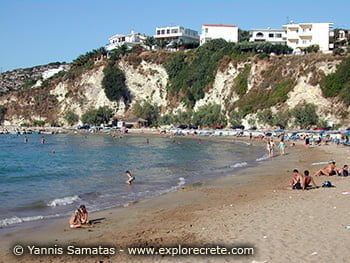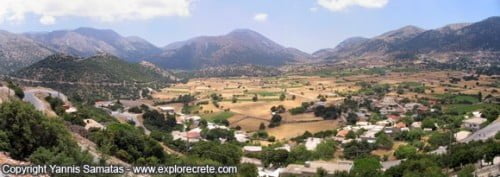History of Platanias
The history of Platanias has its roots somewhere in the Late Minoan period, as we see from archaeological finds from excavations in the nearby villages of Platanias Municipality.
Cult objects and grave goods have been discovered in Modi and Vrysses, as well as the remains of rural villas and tholos tombs which bear witness to the life and development of the local area from the 13th to the 4th century BC.
Platanias in Mythology
There are at least two references to Platanias in Greek mythology:
When the goddess Athena visited Crete, she only drank water from a spring in Ano Platanias.
On his way home from the Trojan War, King Agamemnon founded the city of Pergamos at the mouth of the River Platanias.
Platanias in the Arab, Venetian and Turkish periods
The Byzantine period found Platanias, along with the rest of Crete, under Arab occupation. From this time on, the coasts were dangerous due to pirate raids, so the population preferred to live far from the sea, up high on vantage points from which they could watch for enemy ships. This is the main reason why the old village of Platanias (Ano Platanias) was built on the Acropolis hill.
The Venetian period which succeeded the first fall of Constantinople in 1252 has left indelible traces of its influence on the area. In Venetian times, Platanias is mentioned in documents as Plataneas or Pyrgos Platanea. It was a village set out in a horseshoe shape on the hill, where Ano Platanias is today.
The Venetians were followed by the Turks, who conquered Crete in 1645. Some inhabitants of Platanias died in the battle for the fortress on the islet of Thodorou, whose 70 defenders blew themselves up rather than surrender to the Turkish army.
Buildings from the last years of the Turkish period are still preserved in the old village of Ano Platanias, along with a Turkish lookout post carved into the rock. There was even a great cannon hidden in a cave cut into the hillside, to defend the area from enemy attack.
Platanias in the 19th century according to a traveller
In 1881, the doctor and archaeologist Iosif Hatzidakis took two hours to cover the 11 kilometres from Chania to Platanias.
After resting at a kafeneion built in the shade of a great plane tree next to the river, he climbed up to the Acropolis of Platanias, in other words to the village on the hill. The village consisted of 150 houses, and 70 children attended the local school.
Platanias in the Second World War
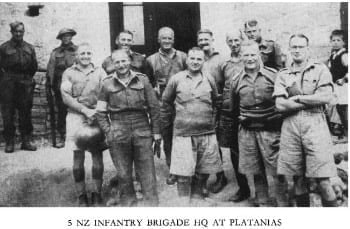
New Zealand troops in Platanias
Platanias has also gone down in history due to the Battle of Crete during the Second World War.
Its moment of fame was during the fierce fighting for the airfield at Maleme, which was defended by scanty Greek and Allied troops.
The heroic battles and the countless German and Allied dead have gone down in history. They are commemorated in the British and Commonwealth War Cemetery above Souda Bay, and the German War Cemetery behind Maleme Army Base, very close to Platanias
Platanias today
In former times, Platanias was the main village and its inhabitants were farmers and shepherds. Platanias is still famed for its agricultural produce, citrus fruit, oranges and olive oil, but it has developed rapidly in recent decades due to tourism.
You may be startled by the huge signs, neon lighting (if you arrive at night) and endless succession of tourist shops stretching several kilometres, but these are the main features of Platanias today.
There is even a joke about the development of Platanias and the value of land near or far from the sea:
The inhabitants of Ano Platanias, wishing to reward their good children, gave them the fertile fields far from the sea, while the prodigal sons were given the relatively barren seaside lands. However, times changed and the prodigal sons made huge fortunes from their seaside fields, while the good children were left with the orange groves.
This is not just a fairytale; history has repeated itself in many other parts of Crete which have known rapid tourist development, such as Hersonissos near Heraklion.
© explorecrete.com All Rights Reserved. Reproduction or copying without permission is prohibited.

